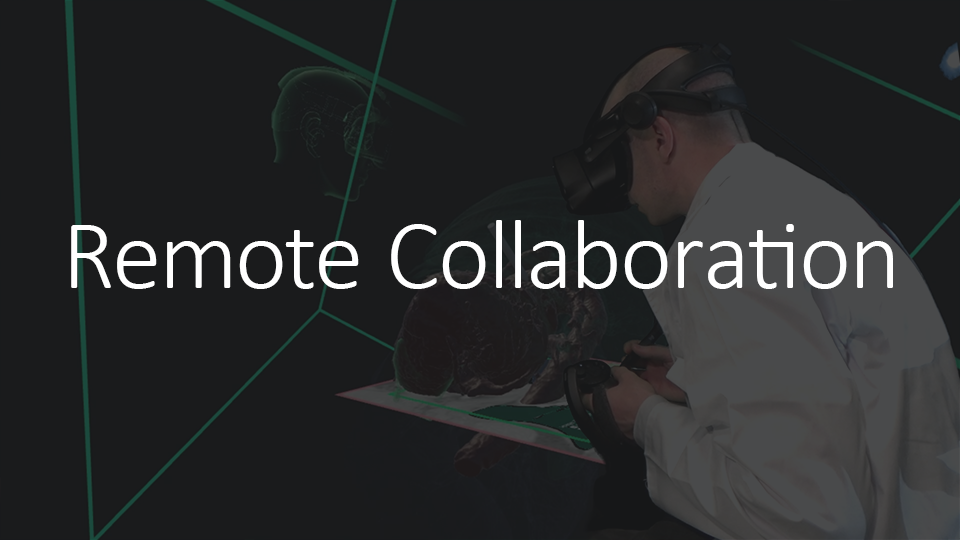Creating 3D anatomical models is a necessary first step in the majority of medical 3D printing and digital surgical simulation workflows. In a previous post, we described how anatomical models can be created in virtual reality (VR) using Elucis, and how that platform can make that process easy and fast. We also discussed how a 3D visualization environment unlocks informative 2D and 3D views, allowing anyone involved in the model creation process to quickly verify the accuracy of their models using the perspective of their choosing.
Now users can collaborate on the anatomical modeling creation process using Elucis. It works by having users join a shared virtual environment from remote locations where they can simultaneously contribute to the creation and editing of 3D anatomical structures with the full suite of Elucis modeling tools.
This is an important development as social distancing guidelines impose restriction on our working conditions. Clinicians are being asked to adhere to social distancing guidelines wherever possible, and that includes the shared office areas where much of the collaborative modeling work has been performed for years. Our latest version of Elucis eliminates this concern. The VR-based platform in Elucis enables users to work “shoulder-to-shoulder” with their peers on anatomical modeling activities from the comfort of their office or home (yes, home). The video below provides a sneak preview.

Here we see two users in the Elucis virtual modeling environment, both looking at the same images and models; both equally equipped to contribute to the work. The key thing to understand is that both users were residing in separate physical locations.
Safety of users
The implications of this are far reaching. Not only can participants performing modeling and review work maintain safe physical distances, while also experiencing the sensation of working next to a colleague, but both users can also share in the modeling and review activities. We see infinite potential in this as peer-to-peer planning and educational activities are put back on the table, even as social distancing guidelines overshadow our work environments. Most importantly, all users involved in a collaborative modeling session have equal access to all the anatomical modeling available in Elucis.
Privacy & security of patient information
Elucis features a fully integrated, remote-networked collaboration environment designed to maintain the safety of personal health information. The images, 3D structures, and all patient identifying information stays entirely within your custody at all times. A remote collaboration hosted on your healthcare organization’s network can be facilitated with a single click if the project database is stored on a network drive or institutionally approved cloud storage area.
If users wish to invite external collaborators, they can do so by exporting an Elucis project and sharing it with their collaborator through a secure means of their choosing. A remote session can then be created on the fly through the generation of a secure, one-time key. Collaborators from outside your organization will only be able to join a session if they possess this key and are opening the same project. It’s worth noting that Elucis can anonymize projects you export for easy sharing with your external collaborators.
Since the images and 3D structures are stored locally on each participants’ system, the telemetry facilitating the remote collaboration never needs to contain image or 3D structure data. Additionally, all audio and voice communication is always encrypted. By setting up the shared environment in this way, security is optimized and users retain full control over their patient information.
It's all about communication
We’ve heard from several of our users as they’ve become acquainted with Elucis. All users appreciate the fast and ready access to anatomical models, but Elucis has always been about more than just bringing modeling and visualization capabilities to clinicians, because medical modeling and the all the advanced visualization approaches associated with it is really about communication. One of the primary goals at Realize Medical is to use VR, with all the potential this technology possesses, to change how medical professionals communicate with each other. The collaboration functions now embedded in Elucis brings us one step closer to that goal.
